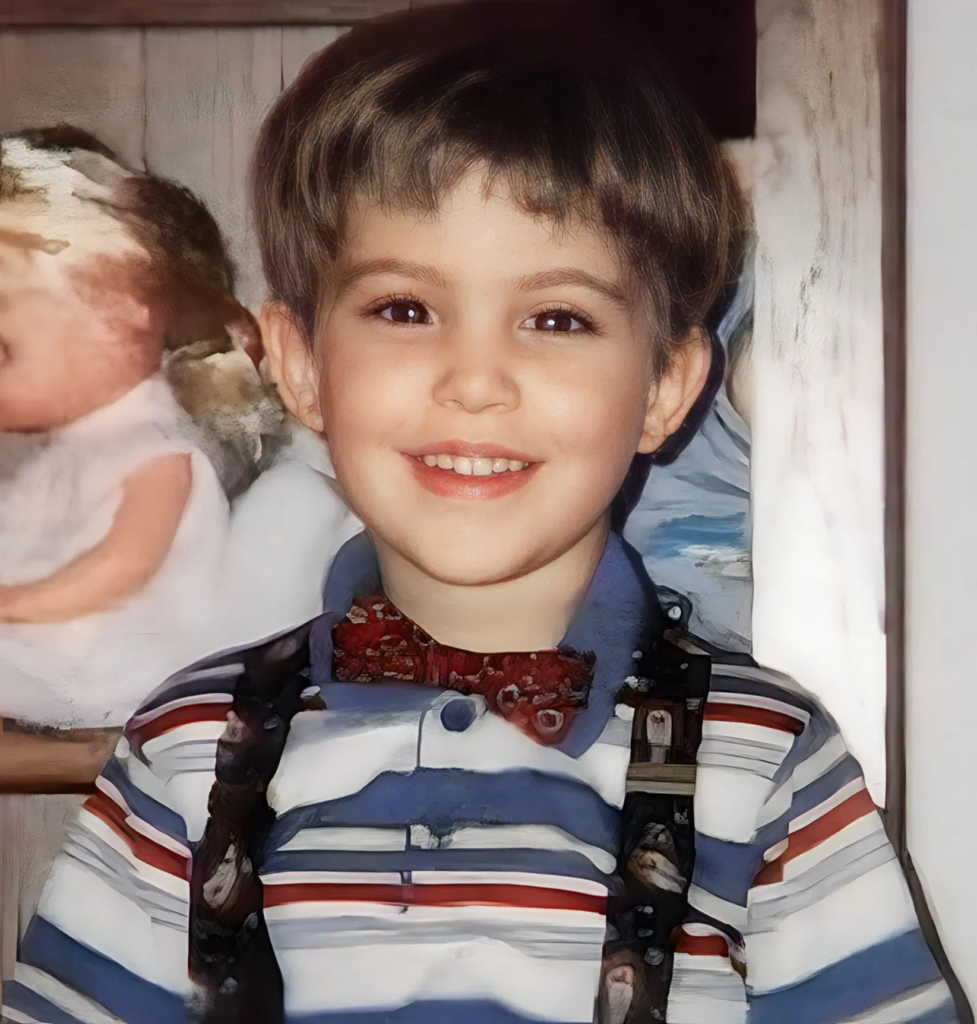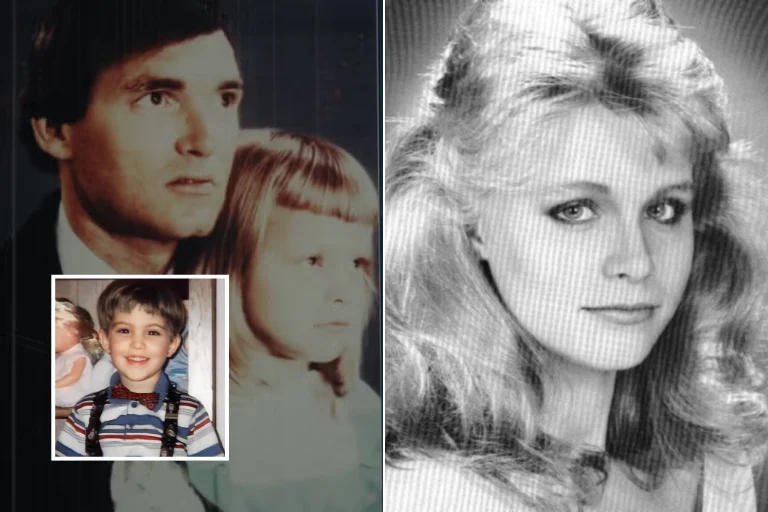For decades, Franklin Delano Floyd moved through America under a maze of fake names. To neighbors he was a painter, a mechanic, a husband, or a father. In reality, he was a career criminal, kidnapper, and killer whose life was built on lies.
In 1990, a young woman named Tonya Hughes died after a suspicious hit-and-run in Oklahoma City. She was Floyd’s wife but she was also his victim. Her real name was Suzanne Marie Sevakis, a child he had abducted years earlier and raised under false identities. Four years after her death, Floyd kidnapped her 6-year-old son, Michael Hughes, and the boy was never seen again.
What began as a hit-and-run investigation slowly unraveled one of the darkest true crime stories in modern history the twisted life of Franklin Delano Floyd.

From Orphanage to Predator
Franklin Delano Floyd was born in 1943 in Barnesville, Georgia, the youngest of five children. His father, a heavy drinker, died when Franklin was barely a year old. His mother, unable to provide for the family, placed the children in an orphanage.
Life inside the orphanage was brutal. Floyd was abused by staff and older boys, and he grew up angry, isolated, and violent. By his teenage years, he had already begun running away and forging documents to survive.
At 16, he enlisted in the Army using fake papers, but the lie was quickly discovered and he was discharged.
By the early 1960s, Floyd’s crimes escalated. At 19, he abducted a 4-year-old girl from a Georgia bowling alley and Sexually Assault her. He was caught and sentenced to 20 years in prison, but escaped after being transferred to a mental hospital. From then on, his life followed a pattern: arrests for robbery, assault, and forgery, short stints behind bars, and constant reinvention under new identities.
Floyd was already dangerous and his crimes were growing worse.

The Abduction of Suzanne Marie Sevakis
In 1974, under the alias Brandon Williams, Floyd met Sandra Chipman in North Carolina. She was a single mother of four children Suzanne from her first marriage, and Amy, Allison, and Philip from her second. Within a month, Sandy married Floyd.
Not long after, Sandy was arrested for passing bad checks and sentenced to 30 days in jail. When she returned home, her life had been shattered. Floyd had vanished with all four of her children.
Sandy eventually tracked down Amy and Allison in a children’s home. But baby Philip and 5-year-old Suzanne were gone. No missing persons reports were filed because Floyd technically had custody through the marriage, leaving the case in a legal gray area.
While Philip was given away for adoption and later rediscovered as an adult, Suzanne never returned. Floyd raised her himself, stripping her of her name, her family, and her identity. From this point on, Suzanne would live only under the names her abductor chose for her.
Sharon Marshall: A Stolen Identity
By the late 1970s, Floyd was calling himself Trenton Davis. He enrolled Suzanne in school as his daughter, using the name Suzanne Davis. They moved constantly, never staying long enough for anyone to ask too many questions.
In 1984, in Atlanta, Floyd adopted a new identity Warren Marshall. Suzanne became his “daughter” Sharon Marshall. At Forest Park High School, she stood out as bright, ambitious, and popular. Teachers remembered her as cheerful and motivated. Friends said she dreamed of becoming an aerospace engineer. She even won a full scholarship to Georgia Tech.
But life at home was very different. Sharon’s classmates noticed that her “father” was strict and unsettling. He bought her lingerie and controlled her friendships. When she became pregnant as a teenager, she tried to run away with her boyfriend. Floyd tracked her down, forced her back, and made her give up the baby for adoption.
Despite her potential, Sharon never got to live her dream. Floyd refused to let her attend college. Instead, he forced her into low-wage jobs, keeping all the money for himself.
Life in Tampa and a Fatal Friendship
By the late 1980s, Floyd and Suzanne had settled in Tampa, Florida, living in trailer parks under the names Warren and Sharon Marshall. Suzanne, now in her late teens, gave birth to a son in 1988 Michael Hughes.
To support the household, she began working as an exotic dancer in clubs like Mons Venus and the World Famous Doll House. It was there she met Cheryl Ann Commesso, another young dancer. The two became close friends.
Floyd, however, was jealous and controlling. He kept Suzanne under constant watch, often waiting outside the clubs during her shifts. He clashed with Cheryl repeatedly, even becoming violent toward her. Witnesses recalled arguments and his growing hostility.
In April 1989, Cheryl vanished. Her red Corvette was found abandoned, but she never came home. At the time, police had no solid leads. Floyd and Suzanne soon disappeared as well, leaving Tampa behind.

From “Daughter” to “Wife”
After Cheryl Commesso’s disappearance, Floyd reinvented himself yet again. In 1989, he and Suzanne traveled to New Orleans. This time, he abandoned the father–daughter act. Under the names Clarence Marcus Hughes and Tonya Dawn Tadlock, they legally married.
Soon after, the couple moved to Oklahoma City with their son, Michael. Suzanne was now living as Tonya Hughes, presenting herself as Clarence’s wife. To outsiders, they appeared to be a struggling young family.
But behind closed doors, Floyd’s control deepened. He demanded Tonya work as a dancer to earn money, taking everything she made. He dictated where she went, who she spoke to, and how she lived. Friends from the clubs later said Tonya wanted to leave him but was terrified of what he might do if she tried.
Tonya’s new life looked like freedom on paper a wife with a child of her own. In reality, it was just another layer of captivity.
The Death of Tonya Hughes
In April 1990, Tonya Hughes was walking back to her motel in Oklahoma City after buying groceries. She wore headphones, unaware of the car speeding up behind her. Witnesses later said the vehicle appeared to aim directly at her.
Tonya was struck and left critically injured on the roadside. She survived for five days in the hospital before dying, just shy of her 21st birthday. Doctors noted her injuries were not fully consistent with a simple hit-and-run. She also showed signs of past trauma and multiple pregnancies.
Floyd, as her husband “Clarence Hughes,” refused to let visitors see her in the hospital. He also declined to arrange or pay for her funeral. Instead, her coworkers and the club owner stepped in to give her a proper burial.
Police considered Floyd a suspect but he claimed he was at the motel during the incident. Without direct evidence, the case stalled. Tonya’s death was officially suspicious but not solved.

Michael Hughes in Foster Care
After Tonya’s death, two-year-old Michael Hughes was placed into foster care with Ernest and Merle Bean. The couple quickly noticed troubling signs. Michael was severely behind in his development and showed symptoms of deep trauma.
Therapists later learned he had often been locked in closets for hours when Floyd left the home. The boy was terrified of the dark and clung to his foster parents for safety.
Despite the damage, Michael began to thrive in the Beans’ care. They loved him and started the process to adopt him. But Floyd was never far away. He insisted Michael was his son and vowed to fight for custody even though a blood test proved he was not the biological father.
By 1994, with adoption paperwork underway, Floyd decided to take matters into his own hands.

The Kidnapping of Michael
On the morning of September 12, 1994, six-year-old Michael Hughes arrived at his elementary school in Choctaw, Oklahoma. It seemed like an ordinary day until Franklin Delano Floyd walked into the principal’s office.
Dressed in a rumpled suit, Floyd told Principal James Davis he needed help getting his son. Then he pulled out a gun. “I’m ready to die,” he warned. “If you don’t help me, you won’t live.”
Floyd forced Davis to fetch Michael from class. Together, the three left in the principal’s pickup truck. In nearby woods, Floyd handcuffed Davis to a tree and drove away with the boy. Davis was rescued hours later, but Floyd and Michael had vanished.
A nationwide manhunt followed. Two months later, Floyd was arrested in Kentucky. But Michael was gone and Floyd refused to say what had happened to him.

The Discovery of Cheryl Ann Commesso’s Murder
In March 1995, a landscaper clearing brush near Interstate 275 in Pinellas County, Florida, spotted a human skull. Police soon uncovered nearly a full skeleton, along with jewelry, clothing, and a breast implant. At first, investigators had no idea who the remains belonged to.
The case broke open months later when a mechanic repairing the principal’s abandoned truck in Kansas found an envelope taped beneath the gas tank. Inside were dozens of disturbing photographs including images of a young woman beaten and bound. Detectives eventually identified her as Cheryl Ann Commesso, Suzanne’s former coworker who had vanished in 1989.
In 1996, dental records confirmed the remains were Commesso’s. She had been shot and left in the marsh. The photographs and other evidence tied to Floyd’s trailer were key to building the case.
In 2002, Franklin Delano Floyd was convicted of Commesso’s murder and sentenced to death. It was the first time authorities successfully tied him to a homicide but the mysteries of Suzanne and Michael remained unresolved.
Unmasking Tonya Hughes
Even after Floyd’s conviction for Commesso’s murder, investigators were still haunted by questions. Chief among them who was the woman he had presented to the world as Tonya Hughes?
Her background never added up. She had no real family records, no past anyone could verify. Friends knew she was secretive but sensed she was hiding something deeper.
The breakthrough came in 2014, when the FBI reopened the cold case. DNA testing and old court records revealed Tonya Hughes was actually Suzanne Marie Sevakis the little girl Floyd had taken decades earlier after briefly marrying her mother.
For the first time in nearly 40 years, Suzanne’s real identity was restored. Her surviving siblings and birth parents were notified, finally learning what had happened to her. A stolen life was given a name again.

Floyd’s Final Confession
In 2014, FBI Special Agents Scott Lobb and Nate Furr interviewed Floyd on death row in Florida. For hours, he was evasive, spinning stories about Michael Hughes living overseas or with friends.
Finally, Floyd broke. He admitted that on the same day he kidnapped Michael in 1994, he shot the boy twice in the back of the head near the Oklahoma–Texas border. “I shot him twice in the back of the head to make it real quick,” he told Lobb.
Investigators searched the area Floyd described with forensic teams and anthropologists. But after 20 years, no remains were found. Michael’s body has never been recovered.
What Floyd never confessed to was Suzanne’s death. Though her injuries raised suspicion, he avoided the subject entirely. It remained the one secret he carried to his grave.
The End of Floyd
By the 2000s, Franklin Delano Floyd was firmly locked in as one of America’s most notorious criminals. Convicted of kidnapping and sentenced to death for the murder of Cheryl Ann Commesso, he spent his final years on Florida’s death row.
In prison, he remained manipulative and uncooperative, sometimes boasting about his crimes, other times denying them. He never revealed the full truth about Suzanne’s suspicious death.
On January 23, 2023, Floyd died of natural causes at the age of 79. Prosecutors and investigators who had pursued him for decades said justice had come late, but his reign of terror was finally over.
As Pinellas-Pasco State Attorney Bruce Bartlett later remarked: “A better thing couldn’t happen to a worse person.”
Aftermath
After decades of lies, the truth about Franklin Delano Floyd and his victims finally surfaced. Suzanne Marie Sevakis’s headstone was corrected to carry her real name the identity she was denied throughout her life.
Her youngest brother Philip, taken as a baby, was identified decades later through DNA, reuniting another piece of the Sevakis family’s broken history. Suzanne’s sisters, Amy and Allison, grew up in foster care but lived on knowing what became of their eldest sibling.
For Michael Hughes, closure never came. His remains were never found, though Floyd’s confession confirmed the worst. To this day, Michael’s case represents one of the darkest outcomes of Floyd’s violence.
Books, documentaries, and the Netflix film Girl in the Picture brought Suzanne’s story to a wider audience, exposing how one man’s crimes destroyed so many lives.
Franklin Delano Floyd died in prison, but the devastation he left behind remains a chilling reminder of the dangers of unchecked abuse, manipulation, and control.

